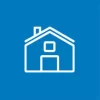Indirect amortization (in British English: indirect amortisation) is the practice of placing amortization payments in a privately funded retirement pillar 3a account (tax-preferred) or 3b account. This differentiates indirect amortization from direct amortization, in which payments directly repay mortgage debt.
Payments towards indirect amortization act as a security deposit which mortgage providers can access if the homeowner fails to meet their mortgage interest payment obligations. Because mortgage debt is not paid off during the amortization period, total interest charges on the mortgage are high compared to a directly amortized mortgage.
But this option comes with tax benefits: Mortgage interest charges and mortgage debt can be deducted from income tax and wealth tax respectively, throughout the life of the loan. This makes indirect amortization a better tax decision.
Assets deposited in a Swiss 3a retirement account, along with accumulated dividends, are often used to pay off a second mortgage in full when the homeowner reaches retirement age. Because retirement is often accompanied by a drop in income, settling a mortgage during the transition to retirement makes sense.
With all or part of the mortgage paid off, mortgage interest charges will drop to match the lower spending power often brought on by retirement. But it is worth noting that private retirement account assets (Swiss third pillar) can also be used to amortize a mortgage ahead of retirement.
One important fact: Whether you opt for direct or indirect amortization, a second mortgage must be paid off within 15 years.
More information:
Mortgages in Switzerland compared
First mortgage - simply explained
What is a loan-to-value ratio?
What is a second mortgage?
Direct Amortization - simply explained
Amortization - simply explained
 Deal of the Day
Deal of the Day 




